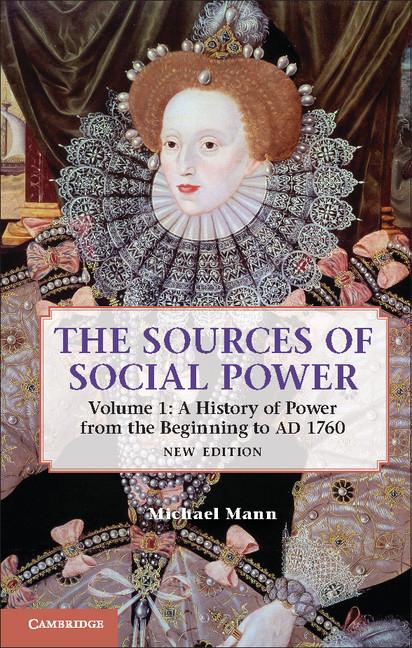
Zustellung: Sa, 14.06. - Mi, 18.06.
Versand in 1-2 Wochen
VersandkostenfreiBestellen & in Filiale abholen:
Volume 1 examines interrelations between sources of power from neolithic times up to just before the Industrial Revolution in England.
Inhaltsverzeichnis
Preface to the second edition; 1. Societies as organized power networks; 2. The end of general social evolution: how prehistoric peoples evaded power; 3. The emergence of stratification, states and multi-power-actor civilisation in Mesopotamia; 4. A comparative analysis of the emergence of stratification, states and multi-power-actor civilisations; 5. The first empires of domination: the dialectics of compulsory cooperation; 6. 'Indo-Europeans' and iron: expanding, diversified power networks; 7. Phoenicians and Greeks: decentralized multi-power-actor civilisations; 8. Revitalized empires of domination: Assyria and Persia; 9. The Roman territorial empire; 10. Ideology transcendent: the Christian ecumene; 11. A comparative excursus into the world religions: Confucianism, Islam, and (especially) Hindu caste; 12. The European dynamic: I. the intensive phase, AD 800-1155; 13. The European dynamics: II. the rise of coordinating states, 1155-1477; 14. The European dynamic: III. international capitalism and organic national states, 1477-1760; 15. European conclusions: explaining European dynamism - capitalism, Christendom, and states; 16. Patterns of world-historical development in agrarian societies; Index.
Produktdetails
Erscheinungsdatum
08. November 2012
Sprache
englisch
Seitenanzahl
578
Autor/Autorin
Michael Mann
Verlag/Hersteller
Produktart
gebunden
Gewicht
977 g
Größe (L/B/H)
235/157/35 mm
ISBN
9781107031173
Entdecken Sie mehr
Pressestimmen
Reviews of the first edition: 'The ambition of the conception is, against all conventional expectations, matched by the clarity and grandeur of the execution.' Times Literary Supplement 'This work offers a treasure trove of facts and interpretations that will be useful to readers in many disciplines ...' Choice 'This is a book in the grand Weberian tradition. Mann's conceptual skills and historical grasp are virtuosic and the scope of his enterprise is truly impressive.' Politics and Society '... an impressively learned, wise, and judicious study. It is a major work - perhaps a great work - and will be a landmark, for sure.' William H. McNeill, University of Chicago '... a unique brand of historical sociology that is refreshingly iconoclastic, remarkably complex, and breathtakingly ambitious ... a must-read for comparative and historical sociologists.' Contemporary Sociology
Bewertungen
0 Bewertungen
Es wurden noch keine Bewertungen abgegeben. Schreiben Sie die erste Bewertung zu "The Sources of Social Power" und helfen Sie damit anderen bei der Kaufentscheidung.










